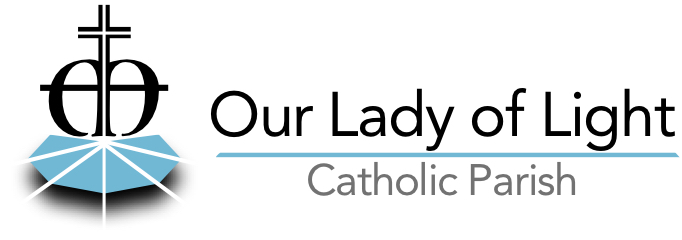The Story Behind the Name
At the turn of the eighteenth century a Jesuit priest, Jose Antonio Genovese (1681-1757) received a visions of the Blessed Virgin Mary. According to him, the Virgin ordered him to paint a representation of the apparition, which he proceeded to do. When he had completed the painting, the Virgin appeared to him once more, gave her approval, blessed the painting and told the priest that it would be a source of joy for all the world.
The painting portrays the Virgin dressed in a white tunic with a blue silken veil and cloak. In her left arm she holds the Infant Jesus, about six months old, who is holding a flaming heart. An angel kneeling beside the Child is offering Him a basket filled with similar flaming hearts.
The right hand of the Virgin grasps the wrist of a youth and appears to be lifting him away from the fiery jaws of a particularly unpleasant looking leviathan.
Angels support the Virgin’s feet and hold a crown above her head.
When Genovese, who was born in Palermo, Sicily, came to Mexico in 1715, he brought the painting with him. At first there was some difficulty finding it a home. the Jesuits were not apparently attracted to the painting and eventually a lottery was held to decide which of the Jesuit houses in Mexico should have the privilege of displaying it. The Church of Leon in Guanajuato proved the winner and the painting was hung there in 1732. Devotion to the image, named “Our Mother of Light,” grew and in 1777 a congregation in honor of the Mother of Light was formed. In 1810, she was named patron saint of the City of Leon.
The devotion became increasingly popular, so that, when the painting was moved to the Cathedral, the entire diocese was dedicated to Our Mother of Light. In a memorable festival in 1902, Our Mother of Light was crowned in Leon and in 1912 her sanctuary was elevated to a Minor Basilica.
During the Inquisition, reproductions of the painting were banned, since some interpretations alleged that the Blessed Mother was removing souls from Hell – a usurpation of divine prerogative! Translations of the title of the painting vary. It is known as Our Lady of Light in Italy, France, and other European countries, and it is under this name that it has entered the United States.

